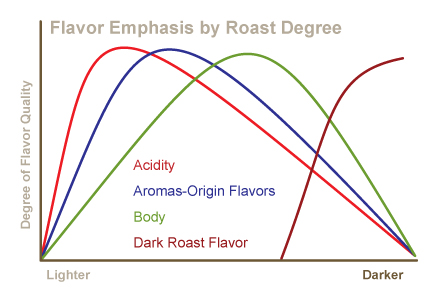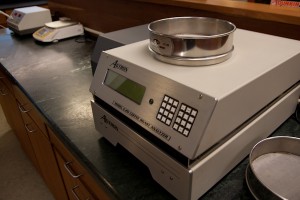Roasted Coffee and Degree of Roast Color
 When testing coffee, the roast degree will determine what flavor component of the individual coffee is emphasized and is a primary determinant of the flavor profile.
When testing coffee, the roast degree will determine what flavor component of the individual coffee is emphasized and is a primary determinant of the flavor profile.
More acidic coffees may maintain their acidity better at lighter roasts, while those that naturally have heavier body may be able to maintain that body through darker roasts. Some origin flavors can be more clearly perceived when the roast is lighter (more acidic), while some are obscured at the same level of roast.
Two measurements can be taken using the Agtron, the whole bean color and the ground bean color. The ground roast color will always be a number greater than the whole bean roast number. The difference between these will reflect the evenness of roast. If the difference is too great there is a chance that “tipping” (burned ends of the beans) has occurred resulting in a charred flavor or the inner portions of the bean have not been completely roasted, resulting in an astringent flavor. If the difference is too small the coffee may tend to taste bland and uninteresting.

Agtron
It may be necessary during the crop year to change the Agtron standard slightly. Past crop coffee, which has lost significant acidity and moisture, may taste a bit better if the roast is a little lighter, while a slightly darker roast may eliminate some new crop taste and add body.
The degree of roast is one of the primary decisions to be made in determining the flavor profile of the coffee. Coffee Analysts can assist the roaster in bringing the best out of the coffee and assist the retailer in developing coffee specifications for the desired flavor profile and managing that profile throughout the crop year.

